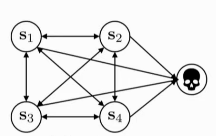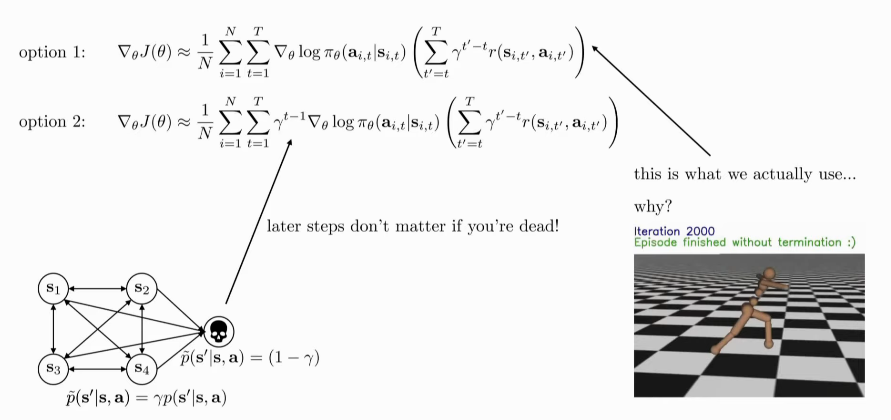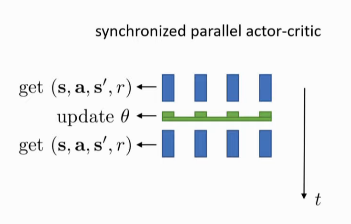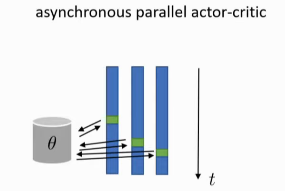Actor-Critic
Actor-Critic improves on Policy Gradients methods by introducing a critic.
Recall the objective:
The question we want to address is: can we get a better estimate of the reward-to-go?
Originally, we were using the single-trajectory estimate of the reward-to-go. If we knew the true expected reward-to-go, then we would have a lower variance version of the policy gradient.
We define the advantage function as
Value Function Fitting
Recall:
We can choose to fit
We can write:
Classic actor-critic algorithms fit
We do Monte Carlo evaluation with function approximation, estimating
Our training data consists of
Alternatively, we can decompose the ideal target, and use the old
This is a biased estimate, but might have much lower variance. This works when the policy does not change much and the previous value function is a decent estimate. Since it is using a the previous value function, it is also called a bootstrapped estimate.
Discount Factors
The problem with the bootstrapped estimate is that with long horizon
problems,
where
We can think of

Figure 1:
We can then modify

Algorithm
- sample
- Fit
- Evaluate
Online Actor-critic
 online actor-critic uses a single sample batch, which is a bad idea in
large neural networks. We need to use multiple samples to perform
updates.
online actor-critic uses a single sample batch, which is a bad idea in
large neural networks. We need to use multiple samples to perform
updates.
The purpose of multiple workers here is not to make the algorithm faster, but to make it work by increasing the batch size.


Generalized Advantage Estimation
is some weighted combination of n-step returns. If we choose
where
the role of
Need to balance between learning speed, stability.
- Conservative Policy Iteration (CPI)
- propose surrogate objective, guarantee monotonic improvement under specific state distribution
- Trust Region Policy Optimization (TRPO)
- approximates CPI with trust region constraint
- Proximal Policy Optimization (PPO)
- replaces TRPO constraint with RL penalty + clipping (computationally efficient)
- Soft Actor-Critic (SAC)
- stabilize learning by jointly maximizing expected reward and policy entropy (based on maximum entropy RL)
- Optimistic Actor Critic (OAC)
- Focus on exploration in deep Actor critic approaches.
- Key insight: existing approaches tend to explore conservatively
- Key result: Optimistic exploration leads to efficient, stable learning in modern Actor Critic methods